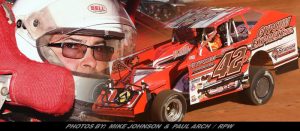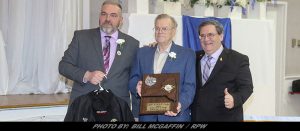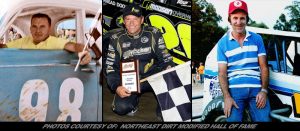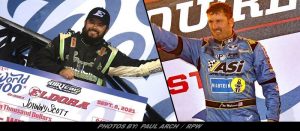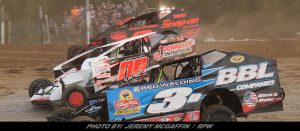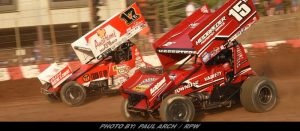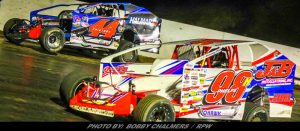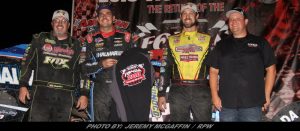Northeast Dirt Modified Hall Of Fame To Honor Engineer Maynard Troyer
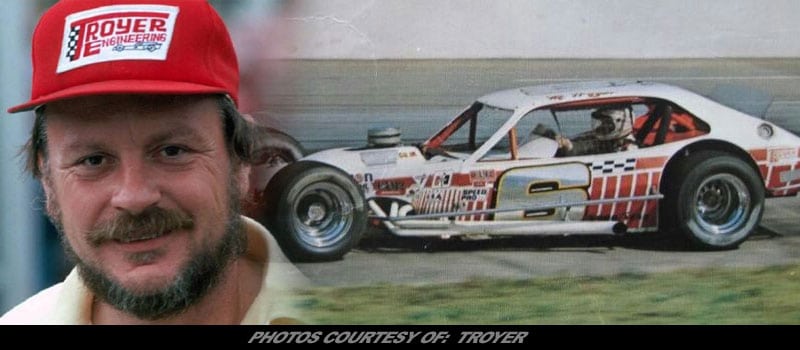

Story By: BUFFY SWANSON / NORTHEAST DIRT MODIFIED HALL OF FAME – WEEDSPORT, NY – For his profound impact as a car builder, the late Maynard Troyer will be honored with the distinguished Mechanic/Engineering Award during the 2018 Hall of Fame ceremonies, to be held on Thursday, July 26, at the Northeast Dirt Modified Hall of Fame and Museum on the grounds of Weedsport Speedway in New York.
In 1958, at the age of 19, Maynard Troyer laid down 50 bucks for a beat-up ’49 Ford and made it into a race car. Amend that: He made it into a winner, acing the very first race he ever entered.
Troyer was always looking ahead. At the absolute top of his game as a driver on the NASCAR scene — while taking down titles and trophies at big-time venues like Richmond, Pocono, Dover Downs and the Trenton Fairgrounds — Maynard made the cunning calculation to capitalize on his fame. In 1977, he began building cutting-edge asphalt Modifieds out of his shop in Rochester, NY, selling his success to those clamoring for an advantage. His own performance was the only promotional tool he needed: In the house car — a pristine white Pinto with a highly offset chassis — Troyer raced to 36 wins in 54 starts and the NEARA series crown in 1978.
“Driving race cars definitely doesn’t put food on my table. But building cars does,” Troyer told writer Candy Dolin.
With his legion of tar cars setting records, Maynard reckoned that a clay racer might sell just as well. He had limited experience driving on dirt, but started paying attention to who had the hot hand at nearby Weedsport, Canandaigua and Rolling Wheels. And a young Alan Johnson caught his eye.
In 1980, Johnson and owner Tico Conley won 20 times in a radically altered old Show Car. Six-inch offset. Small torsion bars. Lightened right-front suspension.
At the end of that season, Maynard called and Alan picked up the phone. Their collaboration revolutionized the sport.
That first “Mud Buss,” as Maynard affectionately tagged the creation, “was pretty close to an inch of our old car,” according to Alan’s father, Milt. But Troyer took Alan’s basic concept to a whole other level.
“It had Maynard’s workmanship in it and that was the ultimate,” Milt Johnson described after the car debuted. “Even the body: When he started putting the body on that first car, I thought it was gonna be ugly.” Milt called Alan’s original sheet-metal “the ugliest body you ever saw.”
“But by the time Maynard put a few bends here and a few bends there, it came out looking real good. The roof was flat and everybody cried their eyes out at Rolling Wheels, the second they saw the car. They cried that the roof was like a wing, and how many seconds faster it was because of the wing.
“But Alan started dead-last in that race, and had zero brakes, and he won it,” Milt reminded. “And I don’t think it was because of the roof. I think it was because the car got good traction and turned left.”
With his development driver dazzling with 28 wins and all the major titles in 1981, Troyer’s first foray into dirt Modified design completely changed the game. The gauntlet was thrown down at Syracuse, where Hall of Fame driver Merv Treichler smoked the field in his Troyer racer.
The following year, over half the cars that made the Syracuse starting grid were Troyers, at a time when many backyard mechanics still considered themselves chassis builders. The biggest Modified race of the year was won by Treichler and Troyer in both 1981 and ’82. Jack Johnson’s Troyers won everything there was to win on the Fairgrounds mile in 1984. As four-time Super DIRT Week winner Gary Balough observed, returning to Syracuse in ’84, “Almost every car in that pit area is either a Troyer or a copy of one.”
“It was a well-engineered car — very comfortable, very easy to drive,” Merv Treichler remembered, noting the meticulous craftsmanship and precise detail that were Troyer’s trademarks. “Maynard put a lot of thought into it to make it work.
“When you talked to Maynard, you got a knowledgeable answer. That was because he was a driver himself; he understood how different drivers think and react,” Merv continued. “And whether you were Alan Johnson or John Jackson — he treated everyone equally. The same car that Will Cagle got was the same car I got.”
Ray Evernham, a Northeast Modified racer before he became a NASCAR Hall of Fame crew chief and car owner, recalled doing business with Troyer in his earlier days. “I probably spent nothing with the man compared to a lot of his customers. But he always had time for me; he always took my phone calls and he always made me feel like I mattered,” Ray recounted. “Whether you had a million dollars or $100, it didn’t matter to Maynard. He was always willing to have a good technical discussion, no matter who you were.”
Evernham counted Maynard as a mentor — in the company of a couple of the most respected masters in racing.
“Throughout my career, there were three people I always called on when I needed advice: Banjo Matthews. Dan Gurney. And Maynard Troyer,” Ray revealed. He went on to cite the similarities of these three men, from opposite ends of the sport’s spectrum.
“All three were great race car drivers. All three were relatively young when they stopped driving. They all had good business sense. And they all went on to become responsible for a lot of great drivers having great cars to drive.”
After hanging up his helmet just shy of his 44th birthday, Troyer proceeded to manufacture en masse one of the most marketable Modifieds ever built. His mind always working, he continued to refine the product — testing design ideas on experimental house cars driven by Billy Osmun, Mike McLaughlin and Jack Johnson — until the late 1980s, when he began to retreat into retirement. In 1989, Maynard relinquished day-to-day control to his longtime protégé, Billy Colton, who later became the sole owner of what is now Troyer Race Cars.
The great Maynard Troyer died after a long illness, on May 10, 2018.


